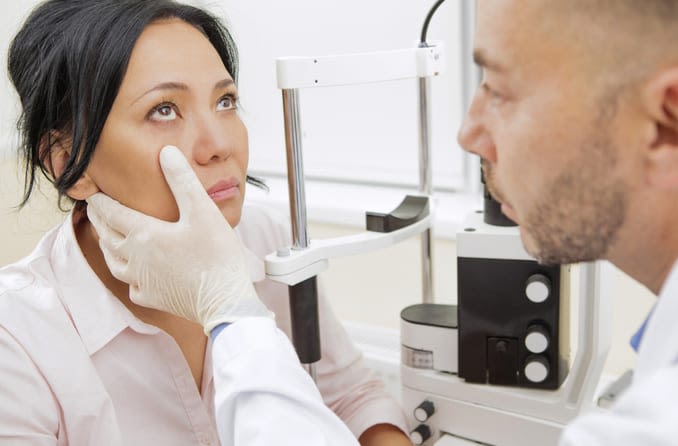Experience Personalized Treatment with Opticore Optometry in Chino
Experience Personalized Treatment with Opticore Optometry in Chino
Blog Article
Discovering the most up to date Technical Innovations in Optometry and What They Mean for Optometrists
From the accuracy of Optical Coherence Tomography to the nuanced insights used by AI-driven analysis tools, these developments are establishing brand-new standards in client analysis and therapy. As these advancements permeate the method, eye doctors are encountered with the obstacle of embracing these tools to improve individual end results.
Technologies in Diagnostic Tools
Advancing the field of optometry, developments in diagnostic tools have changed the way eye treatment professionals examine and identify visual impairments and ocular conditions. The past decade has actually witnessed significant technological advancements, allowing more detailed and precise examinations. Optical Coherence Tomography (OCT), for example, gives high-resolution cross-sectional pictures of the retina, enabling the early discovery of conditions such as glaucoma and age-related macular degeneration. This non-invasive imaging technique has actually come to be indispensable in modern optometric technique.
One more key advancement is the introduction of advanced corneal topography systems, which map the surface curvature of the cornea with accuracy. These devices are particularly valuable for fitting call lenses and detecting corneal conditions. In addition, digital retinal imaging has changed typical ophthalmoscopy, providing in-depth, breathtaking views of the retina that facilitate complete aesthetic examinations.
The growth of wavefront aberrometry has actually also been essential, allowing the evaluation of refractive mistakes with unequaled precision (Optometrist Chino). This technology assists in personalizing restorative lenses and enhancing surgical outcomes for refractive surgeries. Collectively, these analysis advancements empower eye doctors to supply premium person treatment, making certain very early intervention and customized therapy approaches, ultimately improving aesthetic health and wellness results
AI in Individual Monitoring
Structure on the foundation of cutting-edge analysis tools, the unification of expert system (AI) in patient monitoring stands for a transformative jump for optometry. AI systems are significantly utilized to enhance efficiency, precision, and personalization in patient treatment. By examining large amounts of information, AI can determine patterns and predict possible ocular problems, making it possible for optometrists to customize treatments better. This capacity is critical in handling chronic eye illness such as glaucoma and diabetic retinopathy, where very early detection and continual surveillance are essential.
Furthermore, AI-driven systems help with structured person interactions and management procedures. Automated scheduling, online appointments, and customized follow-up strategies not just improve client satisfaction but also enhance time monitoring for specialists. These systems can triage patients based upon the seriousness of their problems, making certain that those in vital need get timely attention.
Additionally, AI enhances decision-making by supplying optometrists with evidence-based suggestions and treatment pathways. By integrating information from digital health records, AI tools offer insights that notify scientific choices, minimizing the danger of mistakes and enhancing client results. As AI continues to progress, its duty in individual management will likely broaden, improving the landscape of optometric care.
Advancements in Retinal Imaging
In the realm of optometry, retinal imaging has observed exceptional technological advancements that are boosting diagnostic capacities and patient treatment. Innovations such as Optical Coherence Tomography (OCT) and fundus digital photography have transformed how optometrists imagine and assess the retina. OCT, specifically, provides high-resolution, cross-sectional pictures of the retina, allowing for the in-depth exam of its layers. This capacity is indispensable for early discovery and administration of conditions like glaucoma, diabetic person retinopathy, and age-related macular deterioration.
Improved imaging methods like OCT angiography are more refining analysis precision. This non-invasive strategy maps blood circulation in the retina, providing critical understandings right into vascular health and wellness without the demand for dye injections. In addition, adaptive optics innovation is being incorporated into retinal imaging systems to deal with eye aberrations, supplying unprecedented picture clearness. Such advancements promote the identification of min retinal changes that can indicate condition development.
Moreover, improvements in fabricated knowledge are enhancing retinal original site imaging by allowing automated analysis of big datasets. These systems assist eye doctors in recognizing patterns a sign of pathology, thus boosting analysis precision and performance. Jointly, these technologies are transforming retinal imaging into a keystone of modern-day eye care, improving end results and expanding healing opportunities.
Teleoptometry's Growing Duty
Teleoptometry is significantly coming to be a vital element of eye care, driven by developments in data and diagnostic tools. As optometry accepts digital improvement, teleoptometry facilitates remote consultations, permitting eye doctors to extend their services past conventional borders. This is particularly beneficial in underserved and country locations where access to specialized eye treatment is usually minimal. By leveraging high-resolution video conferencing and advanced retinal imaging, optometrists can conduct detailed eye exams from afar, making certain prompt diagnosis and treatment.
The integration of expert system (AI) additional improves teleoptometry, making it possible for the analysis of aesthetic data and helping in the detection of eye problems such as glaucoma and diabetic person retinopathy. AI-powered formulas can quickly interpret complex imaging data, offering optometrists with beneficial understandings that strengthen clinical decision-making.
Additionally, teleoptometry supports connection of treatment with smooth assimilation with digital wellness records (EHRs), enabling eye doctors to maintain comprehensive individual backgrounds. When consulting with various experts., this makes sure that patients get constant and individualized treatment even.
In spite of these benefits, challenges continue to be, consisting of guaranteeing data safety and handling client assumptions. Nevertheless, teleoptometry stands for a considerable stride towards even more accessible, reliable, and patient-centered eye care. As modern technology advances, its role is poised to click for more info broaden better.

Future Patterns in Eye Care
A myriad of innovative fads is readied to improve the future of eye treatment, driven by technological advancements and the evolving needs of people. One considerable pattern is the combination of man-made knowledge (AI) in diagnostics, which guarantees to enhance the accuracy and performance of eye assessments. AI algorithms can evaluate huge quantities of data from retinal pictures, potentially finding conditions like diabetic retinopathy and glaucoma earlier than typical methods.
Furthermore, customized medicine is acquiring traction in optometry, with genetic screening educating personalized treatment plans. This technique intends to enhance patient outcomes by customizing treatments to private genetic accounts. Wearable modern technology, such as wise get in touch with lenses, is also coming up, supplying real-time surveillance of intraocular pressure or glucose levels, therefore giving continual insights right into eye and systemic health.
The fostering of augmented fact (AR) and digital reality (VIRTUAL REALITY) in training and person education and learning is an additional arising pattern. These technologies supply immersive experiences that can enhance understanding and skills both for people and optometrists. As these patterns develop, eye doctors must remain abreast of technological improvements to supply cutting-edge care, ensuring better client outcomes and fulfillment in the vibrant landscape of eye treatment.
Verdict

Jointly, these diagnostic improvements equip optometrists to supply exceptional individual treatment, making sure early treatment and customized treatment strategies, inevitably enhancing aesthetic wellness outcomes.

As these modern technologies continue useful content to progress, eye doctors must adapt and include them right into technique, ultimately enhancing workflow efficiency and boosting the standard of eye care supplied to clients.
Report this page